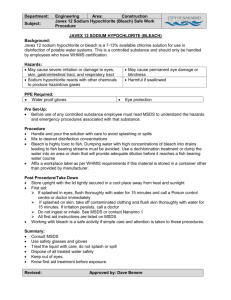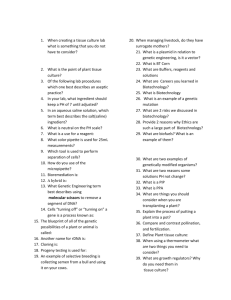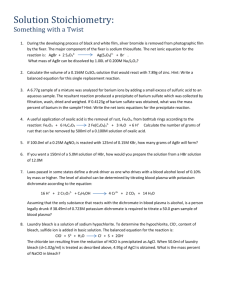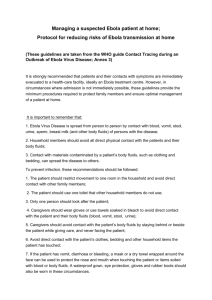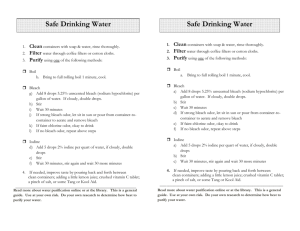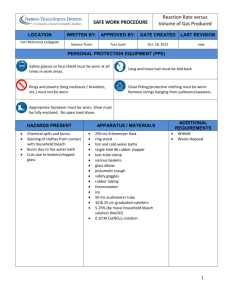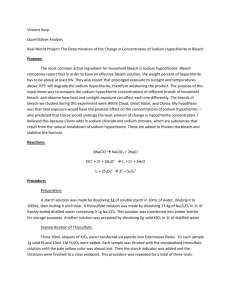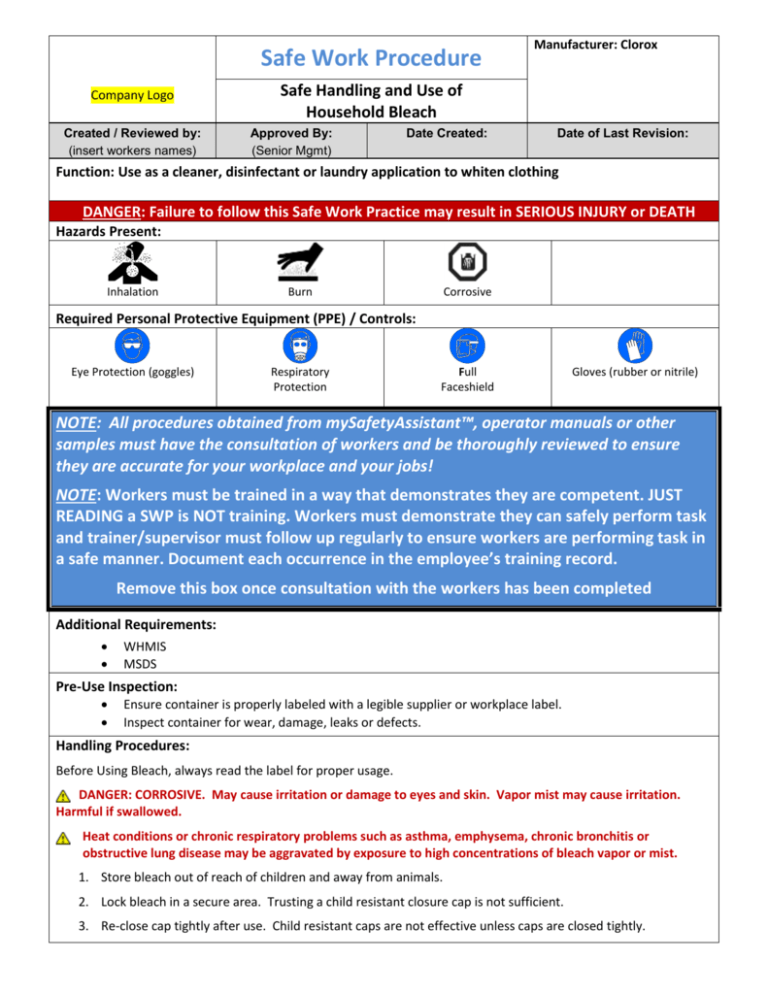
Safe Work Procedure
Company Logo
Created / Reviewed by:
(insert workers names)
Manufacturer: Clorox
Safe Handling and Use of
Household Bleach
Approved By:
(Senior Mgmt)
Date Created:
Date of Last Revision:
Function: Use as a cleaner, disinfectant or laundry application to whiten clothing
DANGER: Failure to follow this Safe Work Practice may result in SERIOUS INJURY or DEATH
Hazards Present:
Inhalation
Burn
Corrosive
Required Personal Protective Equipment (PPE) / Controls:
Eye Protection (goggles)
Respiratory
Protection
Full
Faceshield
Gloves (rubber or nitrile)
NOTE: All procedures obtained from mySafetyAssistant™, operator manuals or other
samples must have the consultation of workers and be thoroughly reviewed to ensure
they are accurate for your workplace and your jobs!
NOTE: Workers must be trained in a way that demonstrates they are competent. JUST
READING a SWP is NOT training. Workers must demonstrate they can safely perform task
and trainer/supervisor must follow up regularly to ensure workers are performing task in
a safe manner. Document each occurrence in the employee’s training record.
Remove this box once consultation with the workers has been completed
Additional Requirements:
WHMIS
MSDS
Pre-Use Inspection:
Ensure container is properly labeled with a legible supplier or workplace label.
Inspect container for wear, damage, leaks or defects.
Handling Procedures:
Before Using Bleach, always read the label for proper usage.
DANGER: CORROSIVE. May cause irritation or damage to eyes and skin. Vapor mist may cause irritation.
Harmful if swallowed.
Heat conditions or chronic respiratory problems such as asthma, emphysema, chronic bronchitis or
obstructive lung disease may be aggravated by exposure to high concentrations of bleach vapor or mist.
1. Store bleach out of reach of children and away from animals.
2. Lock bleach in a secure area. Trusting a child resistant closure cap is not sufficient.
3. Re-close cap tightly after use. Child resistant caps are not effective unless caps are closed tightly.
SWP – (Household Bleach Handling)
4. Wear rubber or nitrile gloves when handling bleach.
5. Wear goggles to protect eyes from splashing bleach.
6. Avoid contact with eyes, skin and clothing.
7. Clear area of bystanders when cleaning a large area (floors, walls etc.).
8. Use general ventilation to minimize exposure to vapors and mists and allow surfaces to dry completely
before allowing anyone to enter area.
a) DO NOT use bleach in full strength for cleaning surfaces. Always dilute in accordance with label
directions.
b) Label all diluted solutions (bottles or containers) with workplace labels.
c) Bleach solutions must be made fresh before use. Diluted bleach breaks down into salt and water
quickly.
9. Wash hands after direct contact.
10. DO NOT wear product-contaminated clothing for long periods of time.
11. Rinse and flush out spray bottles with metal parts in the trigger spray. Bleach will corrode these parts over
time.
Incompatibilities:
1. Never mix bleach with an unknown compound mixture
2. ALWAYS read MSDS’ compatibility information before adding bleach.
SEE chart below for Chemical Compatibility Information for Sodium Hypochlorite (Bleach)
Last Revised: February-9-16 JL
©mySafetyAssistant ™ 2010 All Rights Reserved
Page 2 of 4
SWP – (Household Bleach Handling)
Resource chart is from the Occupational Hygiene and Safety Division Duke OESSO
First Aid:
1. Eye Contact: Hold eye open and rinse with water for 15-20 minutes. Remove contact lenses, after first 5
minutes. Continue rinsing eye. Call a physician.
2. Skin Contact: Wash skin with water for 15-20 minutes. If irritation develops, call a physician.
3. Ingestion: Do not induce vomiting. Drink a glassful of water. If irritation develops, call a physician. Do not
give anything by mouth to an unconscious person.
4. Inhalation: Remove to fresh air. If breathing is affected, call a physician.
Spill Procedure
1. Contain liquid and use absorbent materials on residual liquid.
Last Revised: February-9-16 JL
©mySafetyAssistant ™ 2010 All Rights Reserved
Page 3 of 4
SWP – (Household Bleach Handling)
2. Wash area and let dry.
3. For spills of multiple products, assess the hazard and consult the MSDS for each product and be aware of
products that are incompatible with sodium hypochlorite. Wear breathing protection in enclosed areas
until hazard assessment is complete.
Guidance Documents / Standards /Applicable Legislation / Other:
Guidance Documents:
Material Safety Data Sheet (MSDS)
CSA Standards - (NOTE: when referencing CSA Standards, a copy of
the standard must be available for workers to review)
CSA Z94.3-02 Eye and Face Protectors
CSA Z94.4-02 Selection, Use and Care of Respirators
This Safe Work Procedure will be
reviewed any time the task,
equipment, or materials change and at
a minimum every three years.
Disclaimer: Any references to legislation
such as the Manitoba Workplace Safety
and Health Act or Regulation or
Standards, Codes of Practices or
Guidelines are for convenience sake
only. The original text must be
consulted for all intents and purposes of
applying and interpreting the law.
Manitoba Workplace Safety & Health Regulation
MR 217/06:
Part 6 Personal Protective Equipment
Part 35 Workplace Hazardous Materials Information Systems
Application
Part 36 Chemical and Biological Substances Application
This Safe Work Practice has had the consultation of the following workers:
Name_____________________ Signature ____________________ Position _______________
Date: _________
Name_____________________ Signature ____________________ Position _______________
Date: _________
Name_____________________ Signature ____________________ Position _______________
Date: _________
Retain the draft review with employee consultation signatures on file. On final version manually type in employees
names that were consulted.
Last Revised: February-9-16 JL
©mySafetyAssistant ™ 2010 All Rights Reserved
Page 4 of 4

